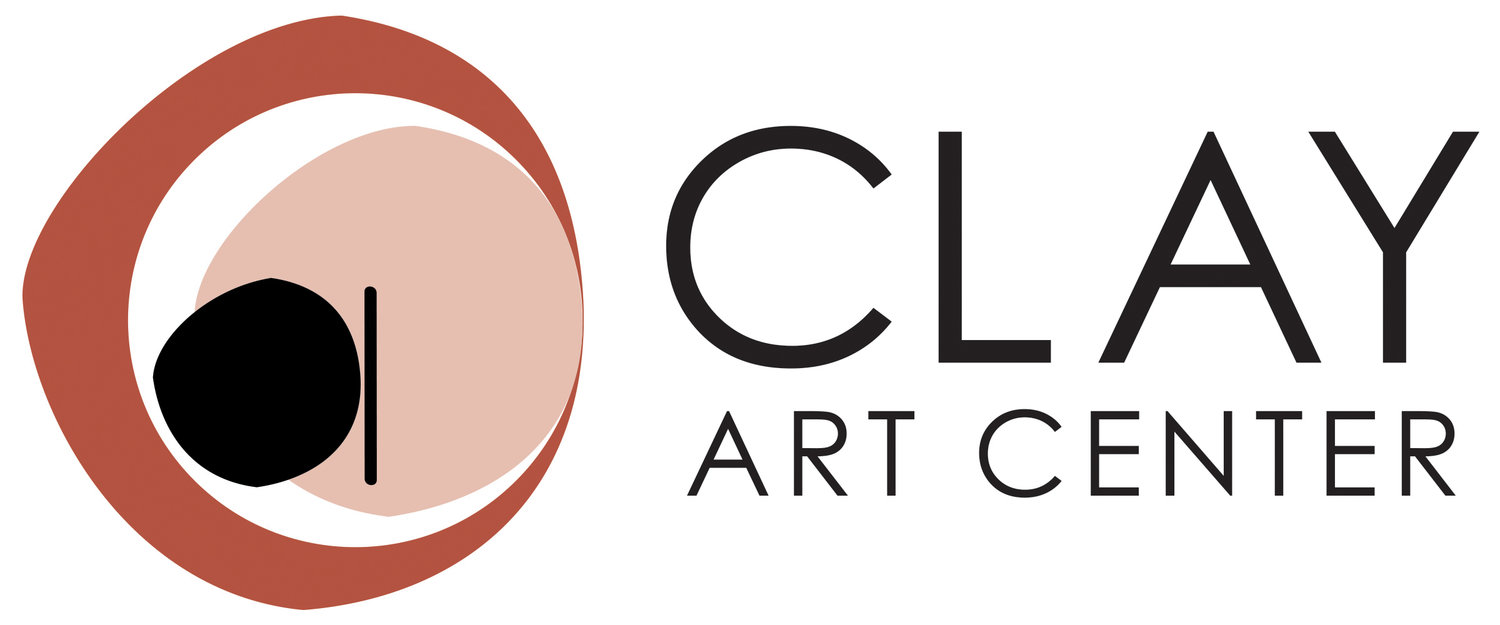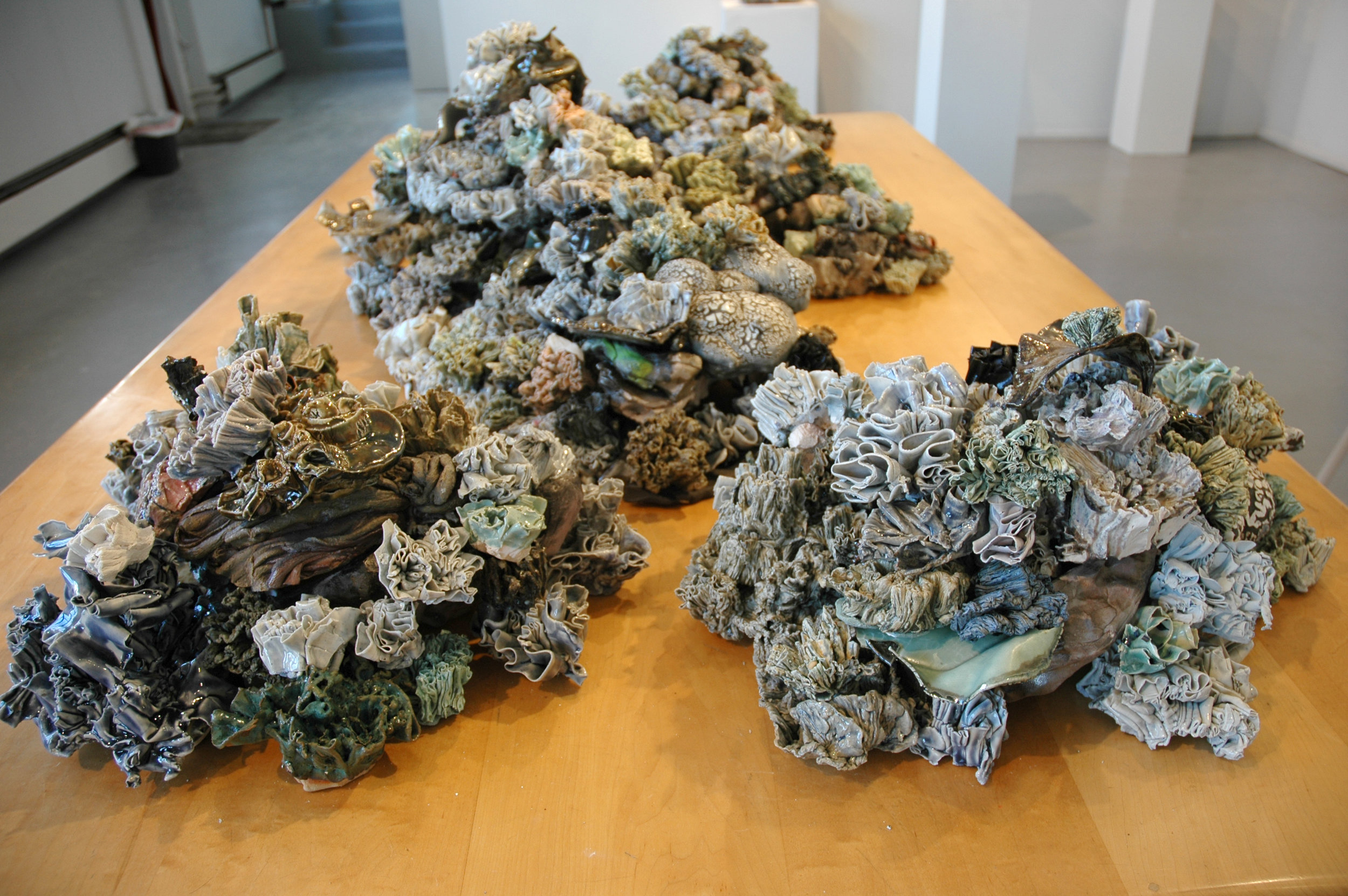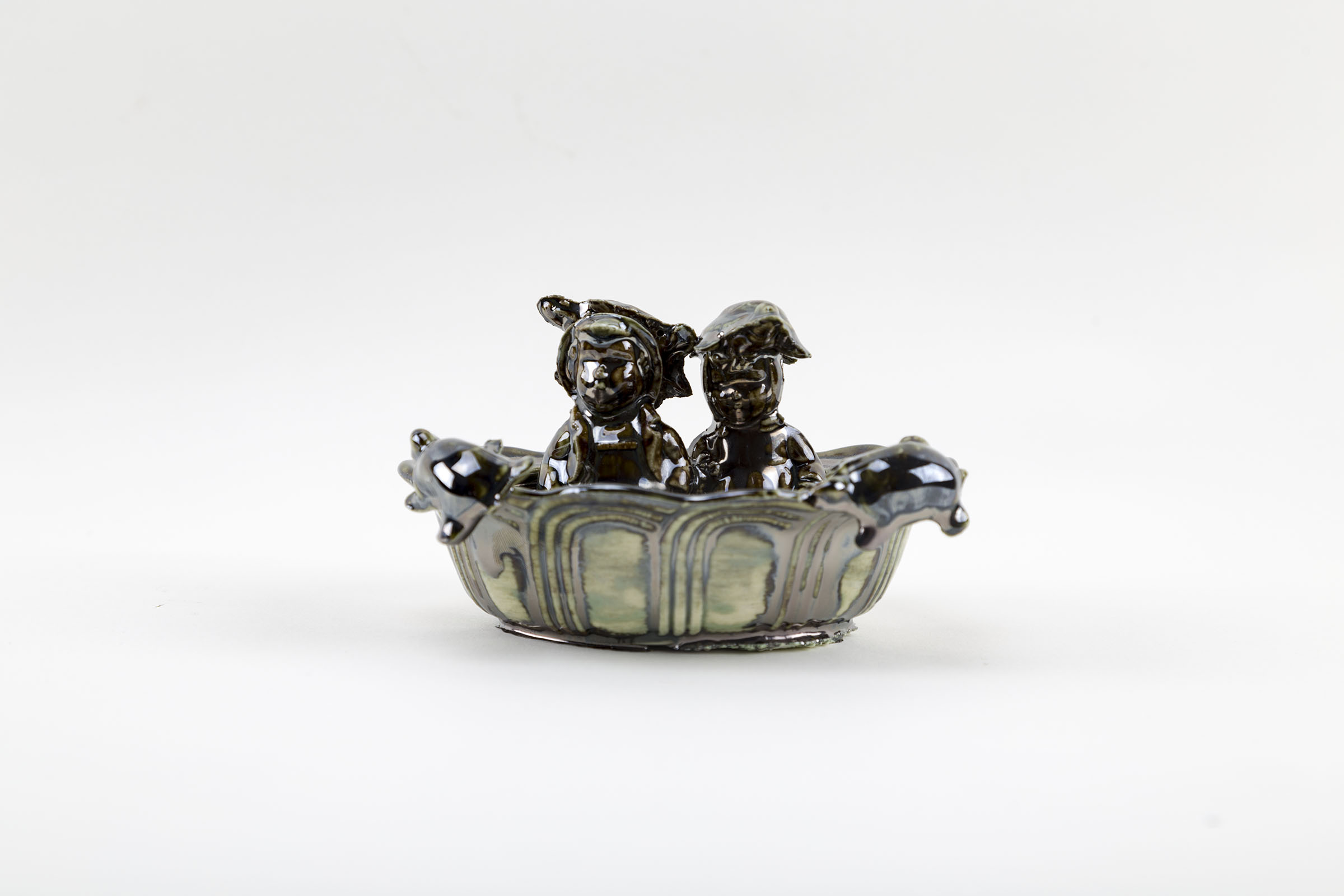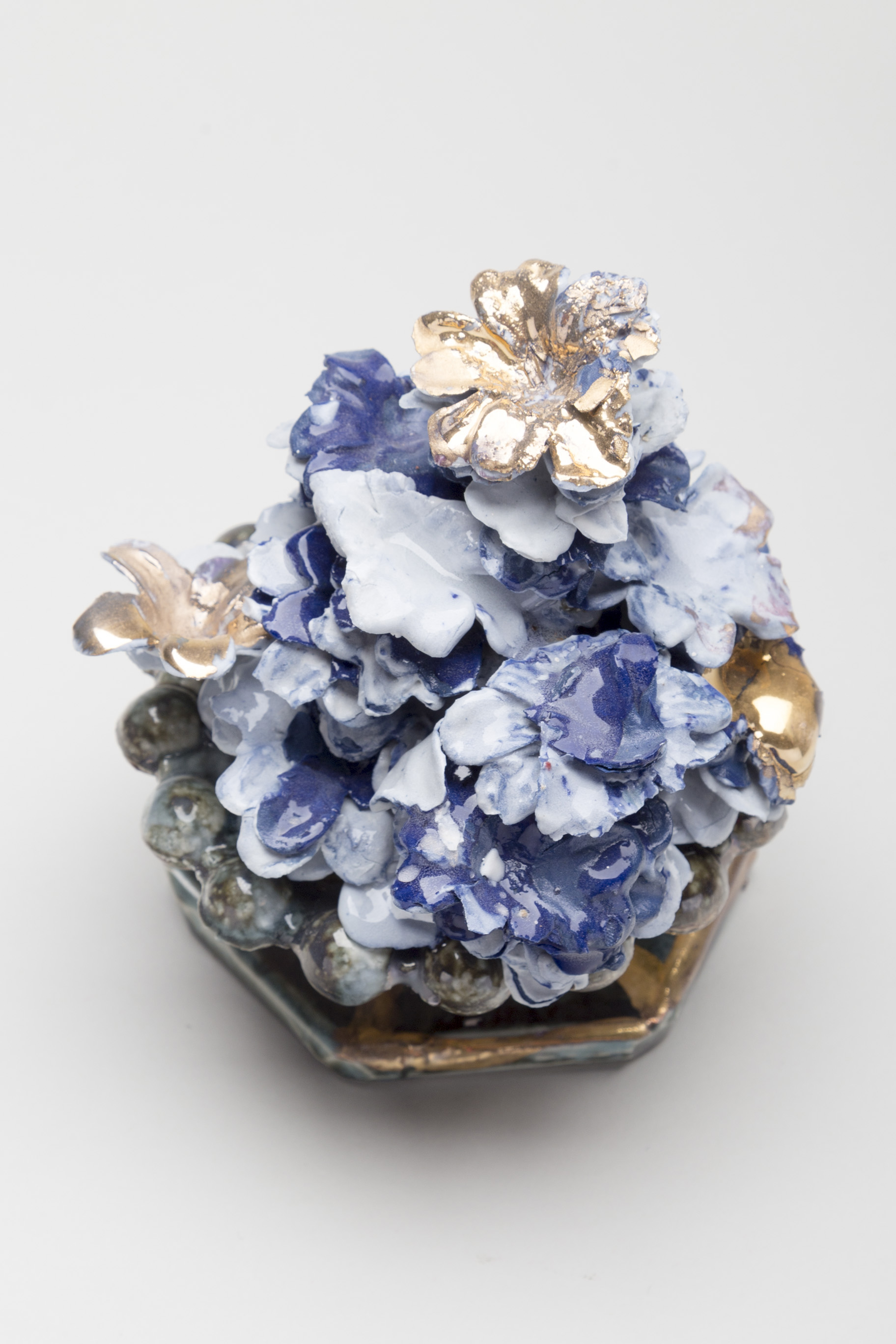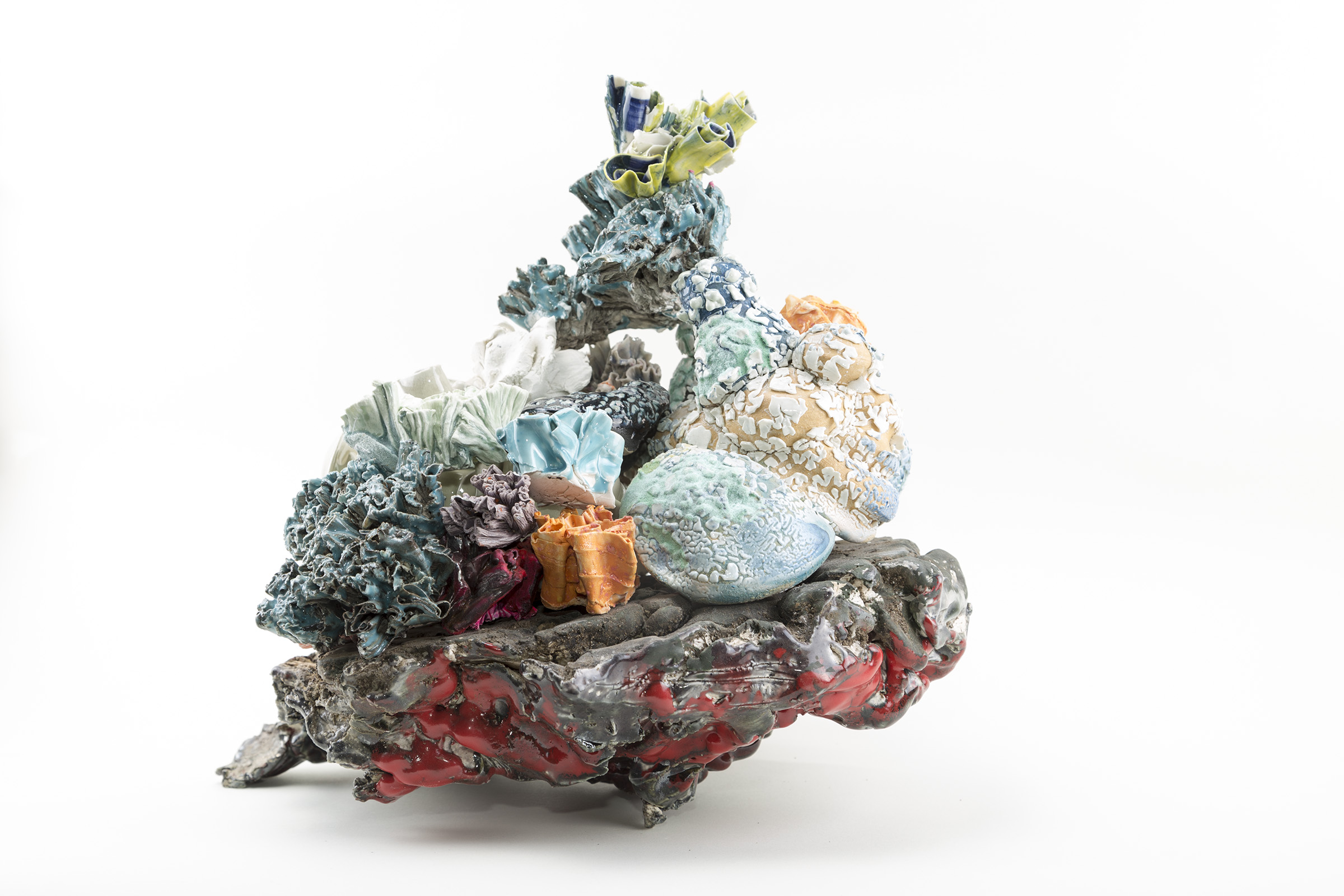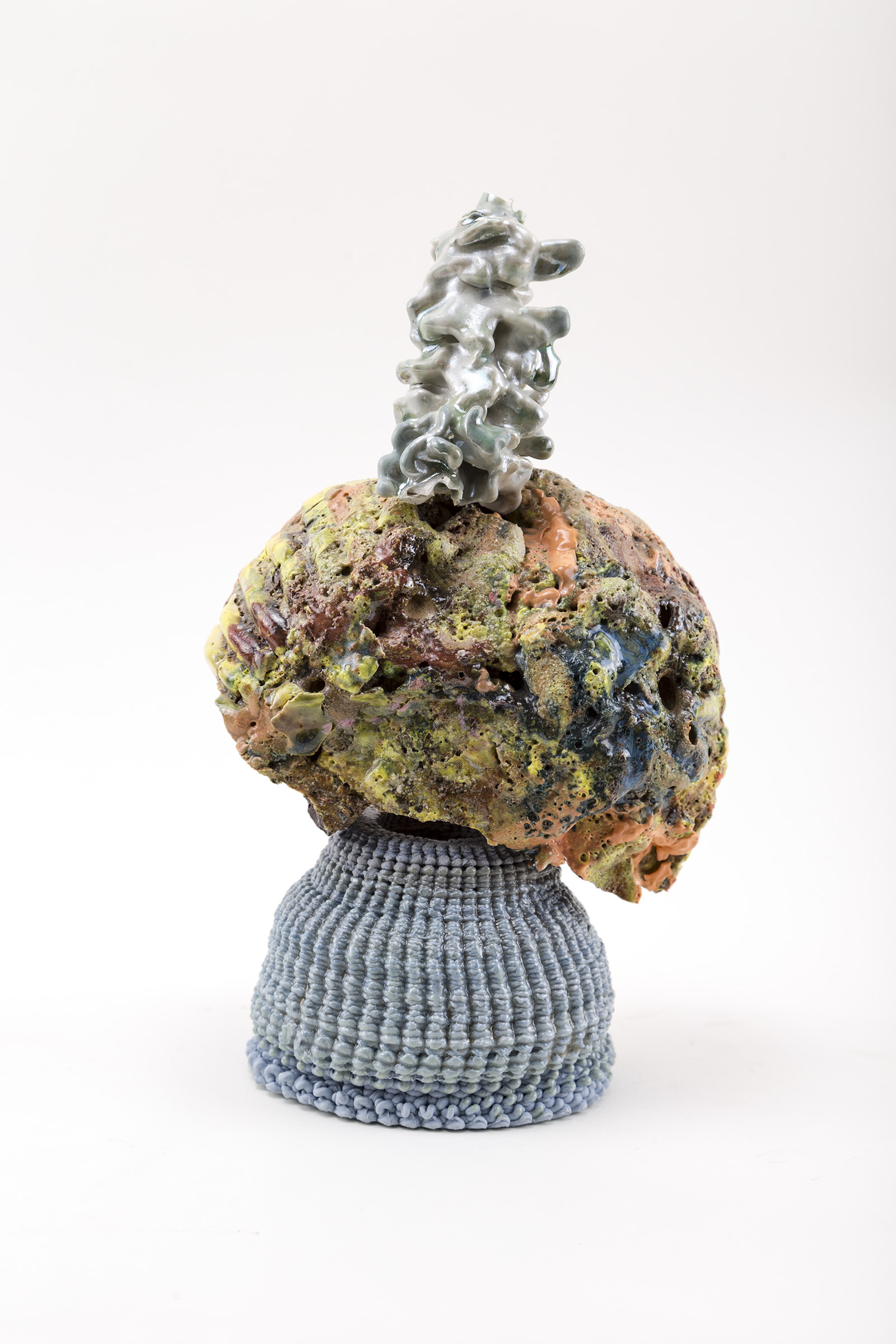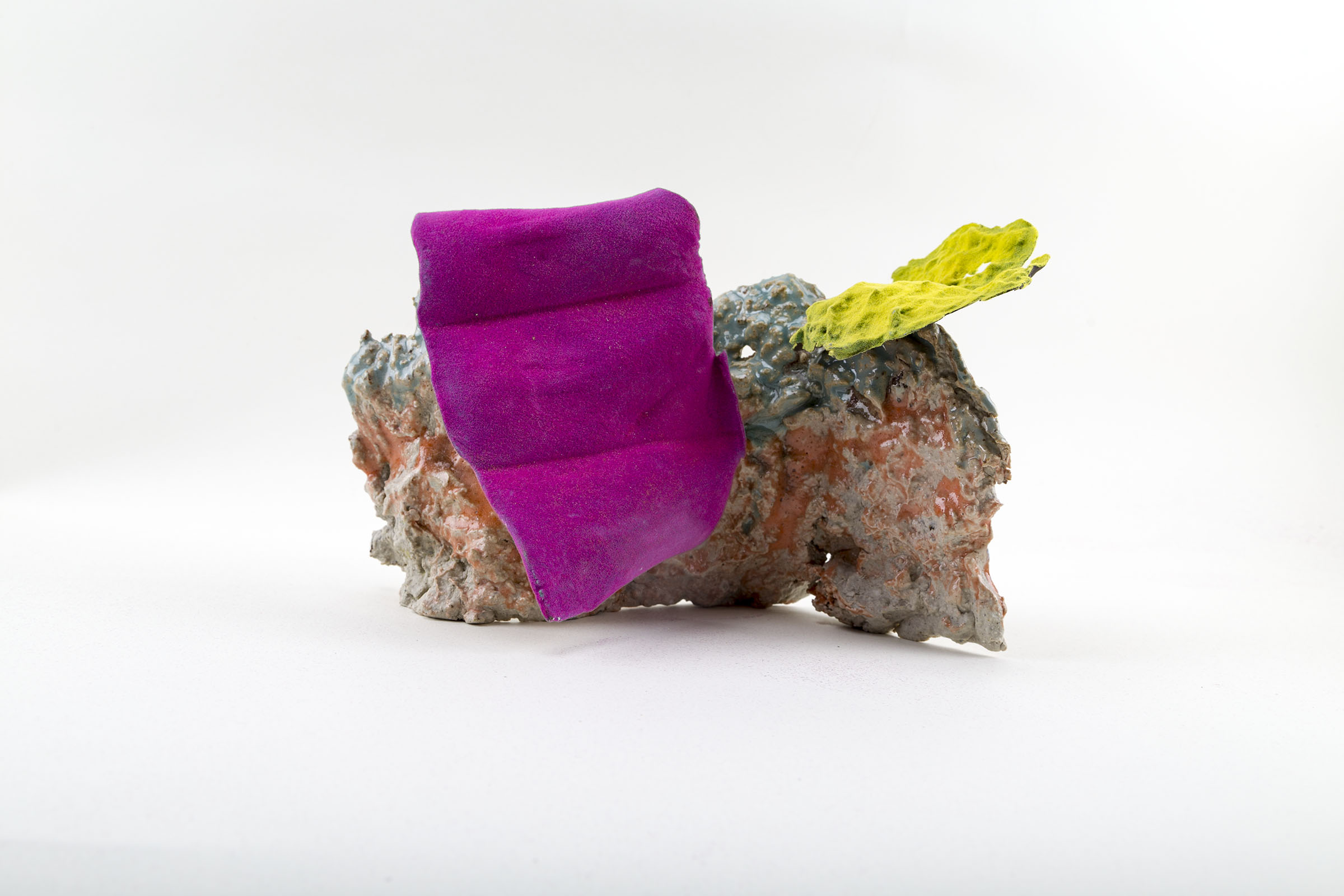FRESHLY FUNK: Lauren Skelly Q&A
Q: How has your work evolved over the years? Can you describe your process?
My work started in vessel making with Yuki at Haven Art. At Adelphi University, I studied with Anti Liu, Bill Shillalies, & Puneeta Mittal, my work grew from vessel to sculptural forms inspired by the idea of a pot. In a workshop at Peter’s Valley, Robert Brady — pushed me to think about the possibilities a pot/form had, I experimented with textures on the surface, and the glaze application. The following semester in college, I started taking the same approach to making in clay, being open to the process. I became inspired by Walter McConnell, and his wet seascapes, that I made wheel thrown, smooth orbs that I connected to make ephemeral sculptures, giving them a life cycle. The end result was the work would fall apart and have the opportunity to become apart of something else through becoming reclaim clay. From there I branched out in more hand building at RISD. Through a material science class with Frank Bosco I became intrigued with break some rules, not firing the dense mounds of clay, allowing for crazing in the right places and realizing I wasn’t breaking any rules, I was giving purpose to these traditionally unwanted surfaces. The rocks I was forming, taught me a lot about making, and the firing process — I remember being afraid to fire, but Larry Bush & Rick Haynes, walked me through it, most of the time no casualties. When there were they quickly became apart of something else. The work was evolving through multiple firings, and yet I needed more. I started making floral corals, on the side. Eventually they were all that I made. I remember talking with Patrick Purcell, about allthese things I was making in clay — his advice was to put it all together, which at the time I thought was not possible, but without this piece Stacked wouldn’t be here. My work has evolved every time due to openness to opportunity. From a vessel to an orb to conglomerate to floral corals, to installations and pieces that invite all forms.
Q: Do you think living in New York is integral to your practice?
I believe living in New York has given my opportunities, that are key to my process. New York offers access to a variety of landscapes from commercial, to nature, to institutions/museums, to cityscapes, and within nature. These places offer inspiration, in the form of color relationships, gestures/composition, and textural elements. I’m lucky to be close to some of the world’s best art, at the Metropolitan Museum of Art, MoMA, the Frick Collection, and the Whitney to name a few, these places offer a variety of art, which allows for great research into color, composition and material. New York has embedded me with a taste for art and to make art.
Q: What trends do you see popping up in the ceramic scene in the NY Metro area?
The New York Clayscape evolves constantly, I find conversations indomesticity, decorative arts and technology to be emerging recently. I’m intrigued by 3D printing as a process for vessel making, specifically the work of Shawn Spangler and Bryan Czibesz, together they have collaborated on vessels made using 3D printing and bright colors.
Q: What is your favorite piece in the show?
My favorite piece is the show, is Stacked, it combines a variety of processes I use for making, wheel, hand building, flocked bits, multiple fired parts and with florals.
